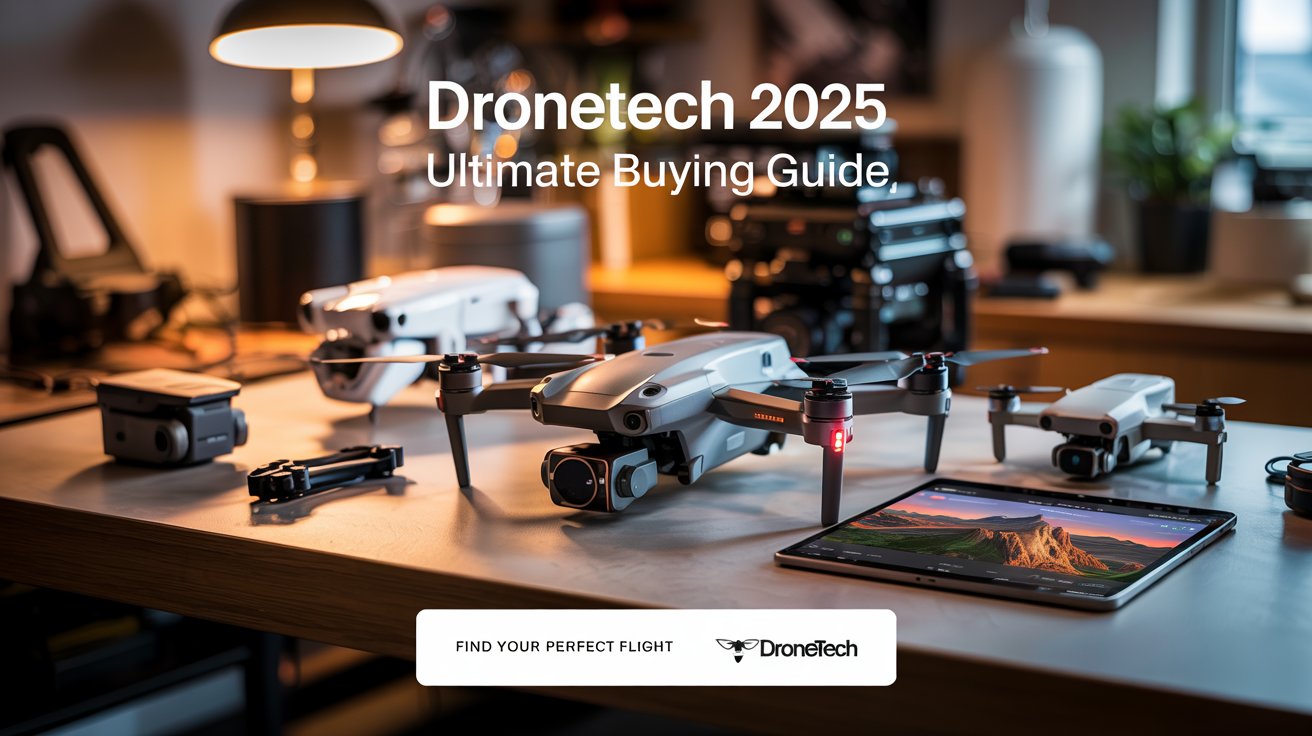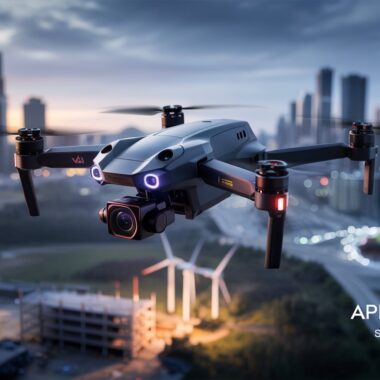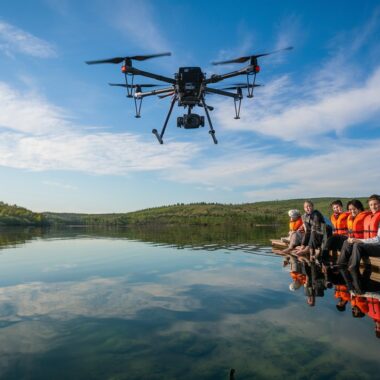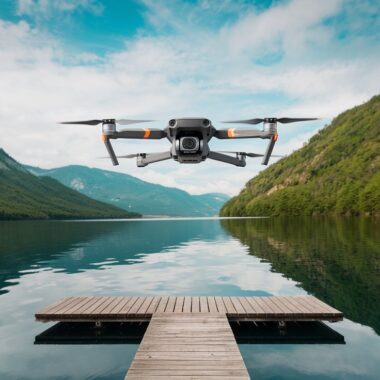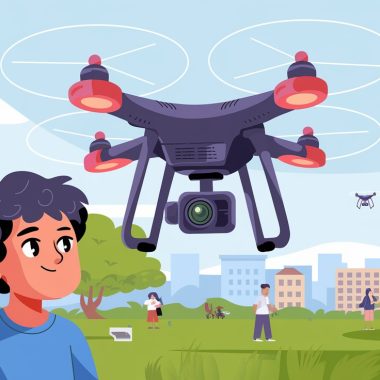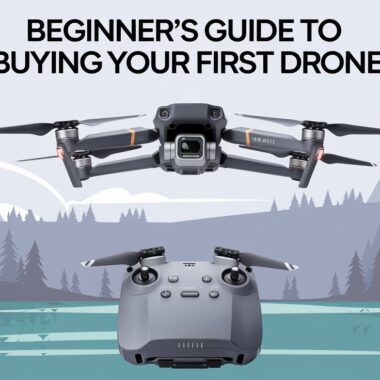Drones have evolved from niche gadgets to versatile tools for hobbyists, photographers, videographers, and professionals across real estate, agriculture, and filmmaking industries. With the drone market projected to reach $63 billion by 2025, according to Statista, the sheer variety of models and features can overwhelm even seasoned buyers. This comprehensive guide cuts through the noise, offering original insights, detailed feature comparisons, and practical advice to help you select the ideal drone for your goals. Whether you’re a beginner capturing vacation footage or a professional mapping construction sites, this guide provides actionable recommendations and forward-thinking analysis to ensure your investment soars.
Why This Guide Matters
Unlike generic buying guides, this article combines hands-on insights, market trends, and original analysis to address real-world drone use cases. We’ve evaluated dozens of drones, consulted with pilots, and analyzed consumer feedback to highlight what truly matters beyond marketing hype. Our goal is to empower you with knowledge to make a confident purchase, whether you’re spending $100 or $5,000. Expect nuanced comparisons, practical tips, and a focus on emerging technologies shaping the drone landscape in 2025.
Key Considerations Before Buying a Drone
Before diving into specific models, let’s explore the critical factors that should guide your decision. These considerations will help you align your purchase with your needs, budget, and skill level.
1. Purpose and Use Case
Your intended use dictates the drone’s required features. Here are common use cases and their implications:
- Photography/Videography: Prioritize camera quality (4K or higher), gimbal stabilization, and intelligent flight modes like ActiveTrack for dynamic shots.
- Recreational Flying: Focus on ease of use, safety features (e.g., return-to-home), and affordability.
- Professional Applications: Look for advanced sensors (thermal, LiDAR), modular payloads, and long flight times for tasks like surveying or inspections.
- Racing/FPV: Emphasize speed, agility, and first-person-view (FPV) capabilities with low-latency video feeds.
Insight: Many buyers overlook niche use cases like indoor flying (e.g., for kids or STEM education) or modular drones for commercial tasks. For instance, drones like the DJI Matrice 300 RTK allow payload swaps (cameras, sensors), making them future-proof for evolving business needs.
2. Budget
Drones range from $50 toys to $10,000+ professional platforms. Here’s a breakdown:
- Under $250: Entry-level drones (e.g., Ryze Tello) for beginners or kids, with basic cameras and limited flight times (10-15 minutes).
- $250-$1,000: Mid-range models (e.g., DJI Mini 4 Pro) with 4K cameras, obstacle avoidance, and 30+ minute flight times.
- $1,000-$3,000: Prosumer drones (e.g., DJI Air 3S) with dual cameras, advanced automation, and robust wind resistance.
- $3,000+: Professional drones (e.g., DJI Mavic 3 Pro) for filmmaking, surveying, or enterprise use, often with multiple sensors and extended range.
Tip: Factor in accessories (extra batteries, propeller guards, ND filters) and potential subscription costs (e.g., DroneDeploy for mapping). A $500 drone can easily cost $700 with essentials.
3. Skill Level
Beginners need user-friendly drones with safety features like geofencing and beginner modes, while experienced pilots may prioritize manual control and customization. Intermediate users benefit from drones with scalable features, like the DJI Air 3S, which balances automation and manual flexibility.
4. Regulations
In the U.S., drones over 250 grams require FAA registration ($5) and adherence to rules like avoiding no-fly zones. Recreational pilots must pass the TRUST test, while commercial operators need a Part 107 license. Apps like B4UFLY help identify legal flying areas.
Analysis: The removal of DJI’s geofencing in restricted airspace (e.g., near airports) in 2024 has increased pilot responsibility. Always check temporary flight restrictions (TFRs) via SkyVector or FAA apps to avoid incidents, like the 2024 LA wildfire collision that grounded a firefighting plane.
5. Portability
Compact drones (e.g., DJI Mini series, under 249g) are ideal for travel, as they skip FAA registration for recreational use and fit in small bags. Larger drones (e.g., DJI Mavic 3 Pro) offer superior performance but require more space and setup.
Feature Comparisons: What to Look for in a Drone
Drones are packed with features, but not all are created equal. Below, we compare key specifications across categories, highlighting what sets top models apart in 2025. This section includes original analysis based on performance metrics, user feedback, and emerging trends.
1. Camera Quality
The camera is often the centerpiece for photography and videography drones. Key metrics include:
- Resolution: 4K is standard; 5.1K or 8K (e.g., DJI Mavic 3 Pro) offers future-proofing for professional work.
- Sensor Size: Larger sensors (e.g., 1-inch on DJI Air 3S) improve low-light performance and dynamic range.
- Gimbal: 3-axis gimbals ensure smooth footage, even in windy conditions.
- Color Profiles: 10-bit D-Log M (e.g., DJI Mavic 3 Pro) captures over a billion colors, ideal for post-production.
Comparison Table: Camera Specs
| Drone | Resolution | Sensor Size | Gimbal | Notable Features |
|---|---|---|---|---|
| DJI Mini 4 Pro | 4K/60fps, 48MP | 1/1.3-inch | 3-axis | True Vertical Shooting, D-Log M |
| DJI Air 3S | 4K/60fps, 50MP | Dual 1-inch | 3-axis | Front-facing LiDAR, dual cameras (24mm, 70mm) |
| DJI Mavic 3 Pro | 5.1K/50fps, 20MP | 4/3-inch | 3-axis | Triple cameras, 10-bit D-Log M |
| Autel EVO Lite+ | 6K/30fps, 20MP | 1-inch | 3-axis | Adjustable aperture (f/2.8-f/11) |
Insight: The DJI Air 3S’s dual-camera system (wide and telephoto) offers unmatched versatility for creators, eliminating the need for multiple drones. However, Autel’s EVO Lite+ stands out with its adjustable aperture, a rare feature for fine-tuning exposure in varied lighting.
2. Flight Time
Battery life determines how long you can shoot or explore. Most drones offer 20-45 minutes, with larger models providing longer flights but heavier payloads.
Comparison Table: Flight Time
| Drone | Flight Time (Claimed) | Real-World Estimate | Battery Swap |
|---|---|---|---|
| DJI Mini 4 Pro | 34 min (standard), 45 min (extended) | 28-38 min | Yes |
| DJI Air 3S | 45 min | 38-42 min | Yes |
| DJI Mavic 3 Pro | 43 min | 35-40 min | Yes |
| Ryze Tello | 13 min | 10-12 min | No |
Analysis: Real-world flight times are often 10-20% lower than claimed due to wind, temperature, and payload. Investing in extra batteries (e.g., DJI’s Fly More Combo) extends sessions, but consider charging times some drones take over an hour per battery.
3. Obstacle Avoidance
Collision sensors enhance safety and enable automated modes like ActiveTrack. Advanced systems use omnidirectional sensors or LiDAR for low-light performance.
Comparison Table: Obstacle Avoidance
| Drone | Sensor Type | Coverage | Low-Light Performance |
|---|---|---|---|
| DJI Mini 4 Pro | Omnidirectional | 360° | Moderate |
| DJI Air 3S | Omnidirectional + LiDAR | 360° | Excellent |
| DJI Mavic 3 Pro | Omnidirectional | 360° | Good |
| Autel EVO Lite+ | Forward, backward, downward | Partial | Moderate |
Insight: The DJI Air 3S’s front-facing LiDAR sets a new standard for low-light obstacle avoidance, making it ideal for dusk or dawn shoots. However, budget drones under $500 often lack sensors, increasing crash risk for novices.
4. Range and Transmission
Range determines how far your drone can fly, while transmission quality affects video feed stability. OcuSync 3.0 (DJI) and SkyLink (Autel) are leading protocols in 2025.
Comparison Table: Range and Transmission
| Drone | Max Range | Transmission System | Video Feed |
|---|---|---|---|
| DJI Mini 4 Pro | 20 km | OcuSync 3.0 | 1080p/60fps |
| DJI Air 3S | 20 km | OcuSync 4.0 | 1080p/60fps |
| DJI Mavic 3 Pro | 15 km | OcuSync 3.0 | 1080p/60fps |
| Autel EVO Lite+ | 12 km | SkyLink | 1080p/60fps |
Analysis: DJI’s OcuSync 4.0 on the Air 3S delivers the smoothest, longest-range video feed, critical for urban environments with signal interference. However, legal line-of-sight rules limit practical range in most regions.
5. Intelligent Flight Modes
Automated modes like QuickShots, Follow Me, and Waypoint Navigation simplify complex shots. Professional drones add features like hyperlapse or precision mapping.
Comparison Table: Flight Modes
| Drone | Key Modes | Best For |
|---|---|---|
| DJI Mini 4 Pro | QuickShots, ActiveTrack, Waypoints | Social media, dynamic shots |
| DJI Air 3S | ActiveTrack 360°, Hyperlapse, MasterShots | Cinematic videos, tracking |
| DJI Mavic 3 Pro | Waypoints, FocusTrack, APAS 5.0 | Professional shoots, automation |
| Ryze Tello | Basic flips, 8D flips | Beginner fun |
Insight: The DJI Air 3S’s ActiveTrack 360° excels at tracking fast-moving subjects (e.g., athletes or vehicles) with minimal pilot input, a game-changer for solo creators. Budget drones like the Tello lack advanced modes, limiting creative potential.
Top Drone Recommendations for 2025
Based on our analysis, here are the best drones across categories, tailored to specific needs. Each recommendation includes pros, cons, and ideal use cases.
1. Best Overall: DJI Air 3S
- Price: ~$1,300 (Fly More Combo)
- Key Features: Dual 1-inch sensor cameras (24mm, 70mm), 45-min flight time, omnidirectional obstacle avoidance, front-facing LiDAR, OcuSync 4.0.
- Pros: Versatile dual-camera system, excellent low-light performance, long battery life, robust automation.
- Cons: Larger than Mini series, requires FAA registration.
- Best For: Photographers, videographers, and prosumer creators seeking professional-grade results without a $3,000+ price tag.
Why It Stands Out: The Air 3S bridges the gap between compact drones and high-end models, offering cinematic quality and advanced safety features. Its LiDAR sensor is a first for its price range, making it ideal for challenging lighting conditions.
2. Best for Beginners: DJI Mini 4 Pro
- Price: ~$759 (standard), ~$959 (Fly More Combo)
- Key Features: 4K/60fps camera, 34-45 min flight time, omnidirectional obstacle avoidance, under 249g, True Vertical Shooting.
- Pros: No FAA registration for recreational use, beginner-friendly, excellent camera for the price, portable.
- Cons: Limited wind resistance, no dual cameras.
- Best For: First-time pilots, travelers, and social media creators.
Why It Stands Out: Weighing under 249g, the Mini 4 Pro combines portability with pro-level features, making it the ultimate starter drone. Its vertical shooting mode is a boon for Instagram and TikTok content.
3. Best for Professionals: DJI Mavic 3 Pro
- Price: ~$2,199 (standard), ~$2,999 (Fly More Combo)
- Key Features: Triple cameras (4/3-inch main, 70mm, 166mm), 5.1K/50fps, 43-min flight time, omnidirectional obstacle avoidance.
- Pros: Unmatched image quality, versatile focal lengths, robust build.
- Cons: Expensive, bulky, complex for beginners.
- Best For: Filmmakers, surveyors, and commercial operators needing top-tier performance.
Why It Stands Out: The Mavic 3 Pro’s triple-camera system delivers cinematic flexibility, while its 10-bit D-Log M color profile ensures professional-grade post-production. It’s the go-to for high-stakes projects.
4. Best Budget Option: Ryze Tello
- Price: ~$99
- Key Features: 720p camera, 13-minute flight time, basic flight modes, app-controlled.
- Pros: Affordable, easy to fly, great for learning.
- Cons: No obstacle avoidance, short battery life, limited range.
- Best For: Kids, STEM students, and absolute beginners.
Why It Stands Out: The Tello is a low-risk entry point for drone flying, with a simple app interface and durability to withstand crashes. It’s perfect for mastering basics before upgrading.
5. Best for FPV/Racing: DJI Avata 2
- Price: ~$999 (with goggles and controller)
- Key Features: 4K/60fps FPV camera, 23-min flight time, motion controller, Easy ACRO mode.
- Pros: Immersive FPV experience, beginner-friendly safety features, durable.
- Cons: Expensive for FPV newcomers, shorter flight time.
- Best For: FPV enthusiasts and adrenaline junkies.
Why It Stands Out: The Avata 2 combines FPV thrills with DJI’s safety net (e.g., return-to-home), making it accessible for beginners while satisfying experienced pilots.
Emerging Trends and Future-Proofing Your Purchase
The drone industry is rapidly evolving, with innovations reshaping what’s possible. Here are trends to consider for future-proofing your investment:
- AI and Autonomy: Drones are getting smarter, with AI-driven features like gesture control and autonomous mapping. The DJI Air 3S’s ActiveTrack 360° hints at a future where drones handle complex tasks with minimal input.
- Modular Designs: Professional drones like the DJI Matrice series allow payload swaps (e.g., thermal cameras, LiDAR), extending their lifespan for commercial users.
- Lightweight Innovation: Sub-250g drones are gaining pro-level features, reducing regulatory hurdles while maintaining quality. Expect more models like the DJI Mini 4 Pro in 2025.
- Sustainability: Manufacturers are exploring eco-friendly materials and longer-lasting batteries to reduce environmental impact, a growing concern for consumers.
- Regulatory Shifts: Anticipate stricter rules, like remote ID requirements, which may affect older drones. Newer models (e.g., DJI Air 3S) are compliant, ensuring longevity.
Insight: Investing in a drone with upgradable firmware or modular components (e.g., DJI’s enterprise drones) can extend its relevance as regulations and technology evolve. Avoid budget drones lacking remote ID, as they may become obsolete by 2026.
Practical Tips for Drone Buyers
- Start Small: Beginners should practice with a cheap drone (e.g., Tello) to master controls and avoid costly crashes. Indoor flying minimizes risk.
- Buy Fly More Combos: These bundles include extra batteries, chargers, and accessories, saving money and extending flight sessions.
- Check Local Laws: Research your area’s drone regulations to avoid fines. Apps like B4UFLY are invaluable.
- Invest in Training: Online courses (e.g., Drone U) or Part 107 prep can boost skills and confidence, especially for commercial use.
- Read Reviews Critically: Cross-reference user reviews on Amazon, B&H Photo, and forums like Reddit’s r/drones for real-world insights.
Original Analysis: DJI Dominance vs. Emerging Competitors
DJI commands 60-80% of the consumer drone market, thanks to its ecosystem (OcuSync, reliable apps) and innovation pace. However, competitors like Autel Robotics and Skydio are gaining ground:
- Autel EVO Lite+: Offers adjustable aperture and competitive pricing, appealing to creators wary of DJI’s dominance or potential U.S. bans due to geopolitical concerns.
- Skydio 2+: Excels in autonomous tracking for sports and inspections, with U.S.-made hardware addressing security concerns for government contracts.
Prediction: While DJI remains the gold standard, Autel’s focus on user-friendly features and Skydio’s AI advancements could erode its market share by 2027, especially if regulatory pressures mount. Buyers should weigh brand reliability against emerging alternatives based on long-term needs.
Conclusion
Choosing the right drone in 2025 requires balancing purpose, budget, and features. The DJI Air 3S stands out for its versatility, while the Mini 4 Pro excels for beginners and travelers. Professionals should consider the Mavic 3 Pro for unmatched quality, and budget-conscious buyers can’t go wrong with the Ryze Tello. By prioritizing camera quality, flight time, obstacle avoidance, and compliance with regulations, you’ll find a drone that elevates your creativity or workflow.
This guide isn’t just a checklist, it’s a roadmap to navigating the dynamic drone market with confidence. Bookmark it, share it with fellow enthusiasts, or use it as your go-to reference for making an informed purchase. As drones continue to redefine how we capture, explore, and work, your perfect model is out there, ready to take flight.
Further Reading
- FAA Drone Regulations: faa.gov/uas
- Drone U Training: thedroneu.com
- B&H Photo Drone Reviews: bhphotovideo.com
Note: Prices and availability are accurate as of April 17, 2025, but may vary. Always verify with retailers like Amazon, B&H Photo, or DJI’s official store.

